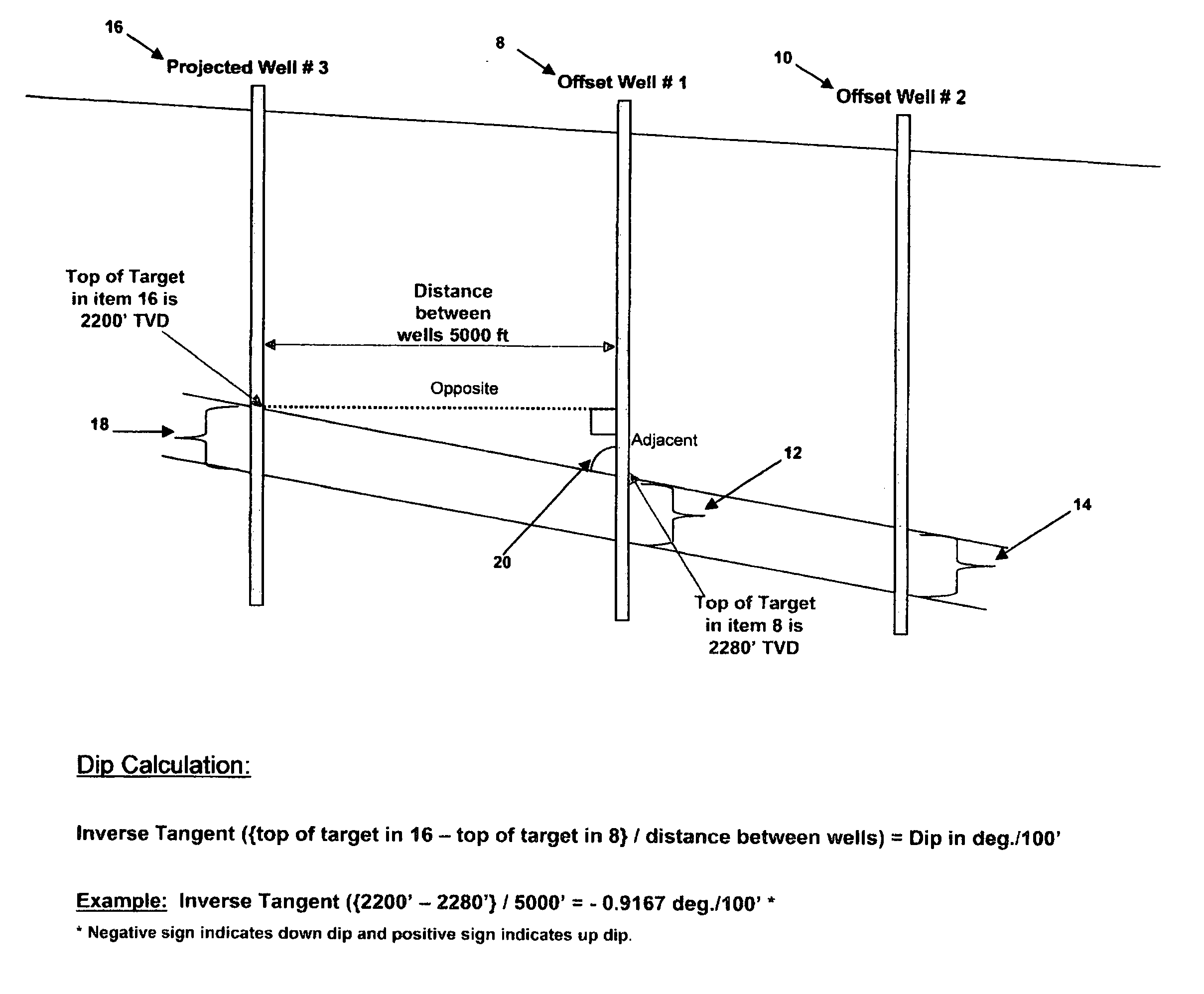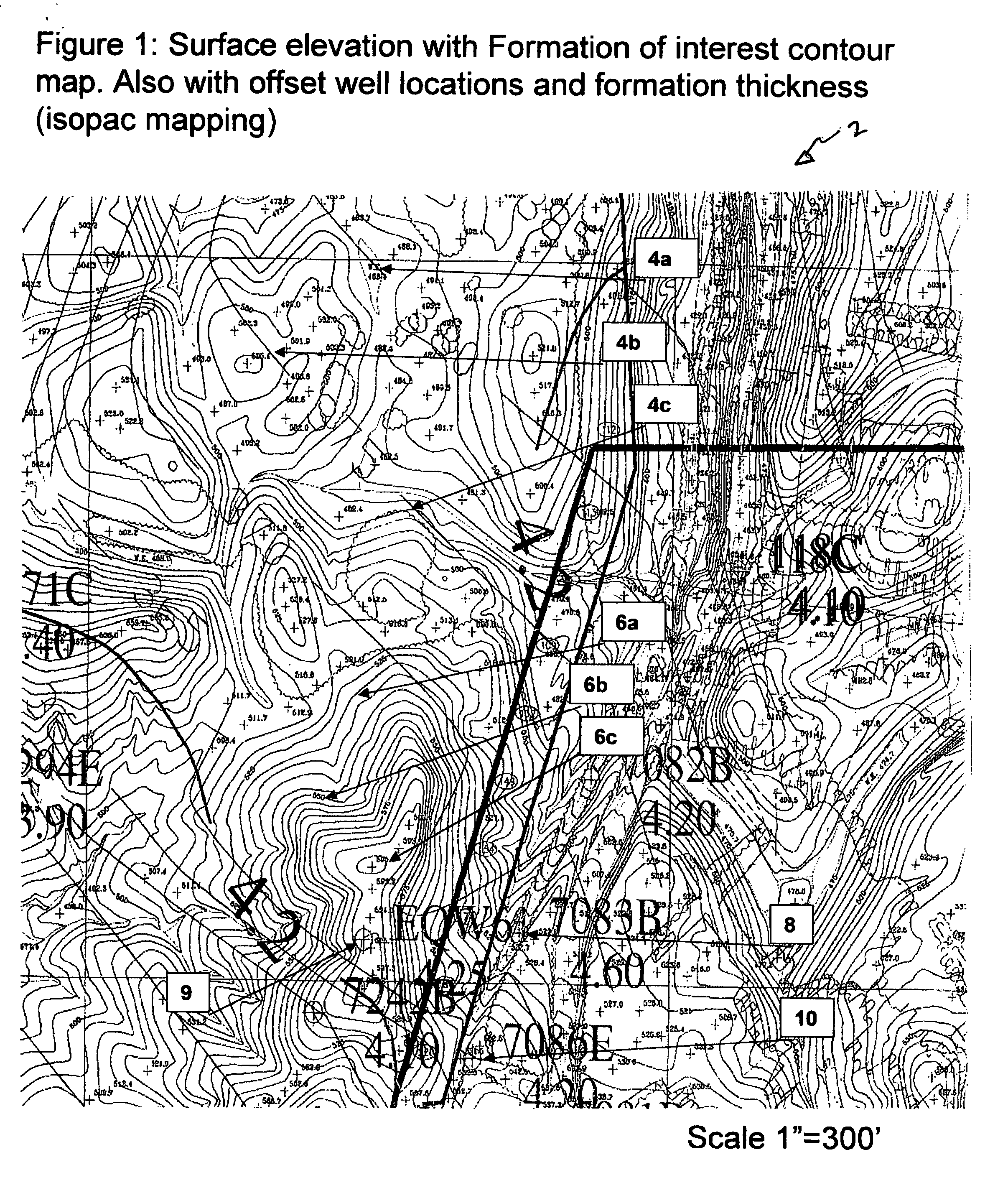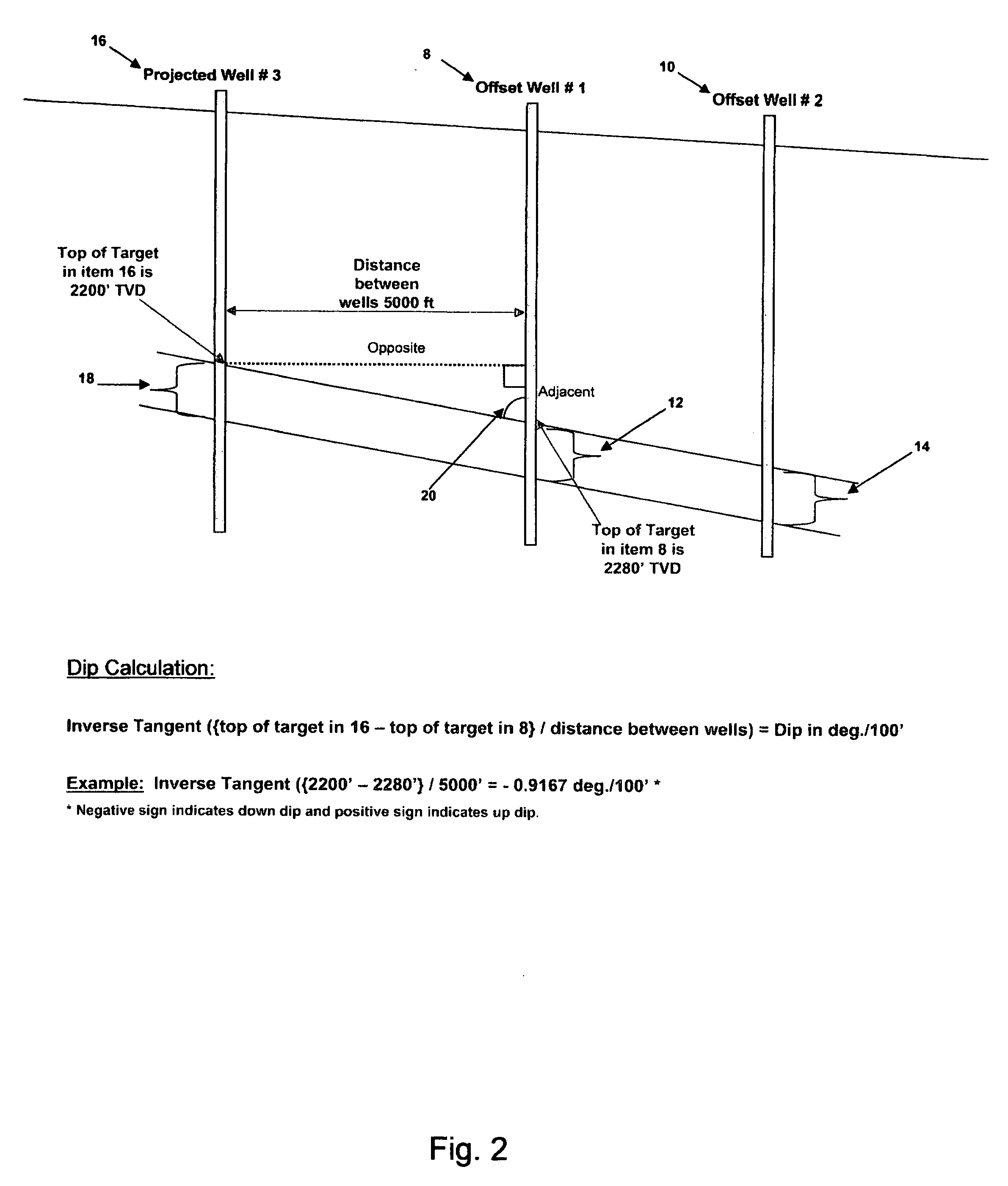Formation dip geo-steering method
a geo-steering and dip technology, applied in the direction of surveying, directional drilling, borehole/well accessories, etc., can solve the problems of several problems in all these techniques
- Summary
- Abstract
- Description
- Claims
- Application Information
AI Technical Summary
Benefits of technology
Problems solved by technology
Method used
Image
Examples
Embodiment Construction
[0021] Referring now to FIG. 1, a surface elevation with formation of interest contour map 2 with offset well locations will now be described. As seen in FIG. 1, the subsurface top of target formation of interest (FOI) contour lines (see generally 4a, 4b, 4c) are shown. Also shown in FIG. 1 is the surface elevation lines (see generally 6a, 6b, 6c). FIG. 1 also depicts the offset well location 8, 9 and 10, and as seen on the map, these offset well locations contain the target formation window thickness as intersected by those offset wells.
[0022] As understood by those of ordinary skill in the art, map 2 is generated using a plurality of tools such as logs, production data, pressure buildup data, and core data from offset wells 8, 9 and 10. Geologist may also use data from more distant wells. Additionally, seismic data can be used in order to help in generating map 2.
[0023] Referring now to FIG. 2, a partial cross-sectional geological view of two offset wells and a proposed well 16 ...
PUM
 Login to View More
Login to View More Abstract
Description
Claims
Application Information
 Login to View More
Login to View More - R&D
- Intellectual Property
- Life Sciences
- Materials
- Tech Scout
- Unparalleled Data Quality
- Higher Quality Content
- 60% Fewer Hallucinations
Browse by: Latest US Patents, China's latest patents, Technical Efficacy Thesaurus, Application Domain, Technology Topic, Popular Technical Reports.
© 2025 PatSnap. All rights reserved.Legal|Privacy policy|Modern Slavery Act Transparency Statement|Sitemap|About US| Contact US: help@patsnap.com



